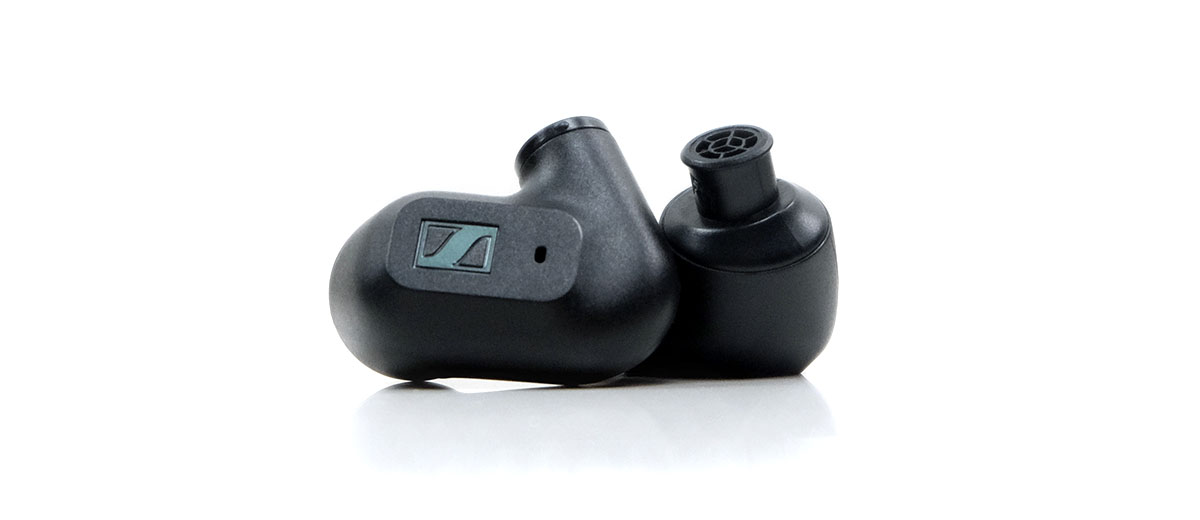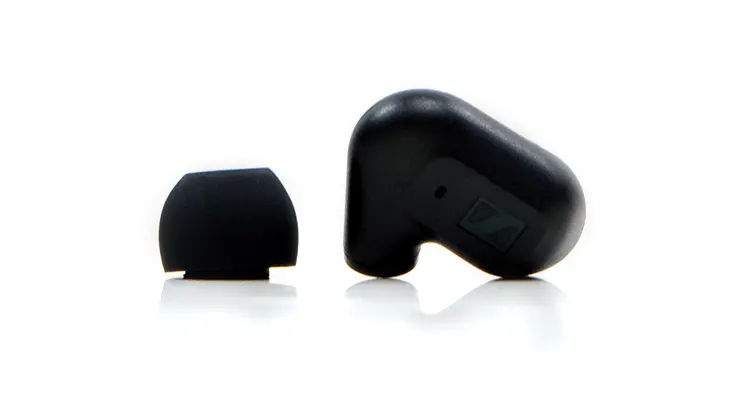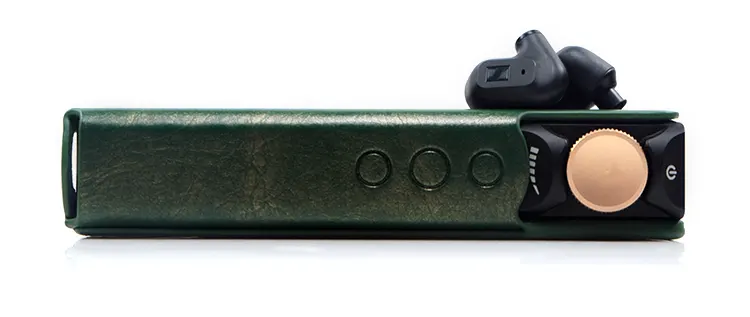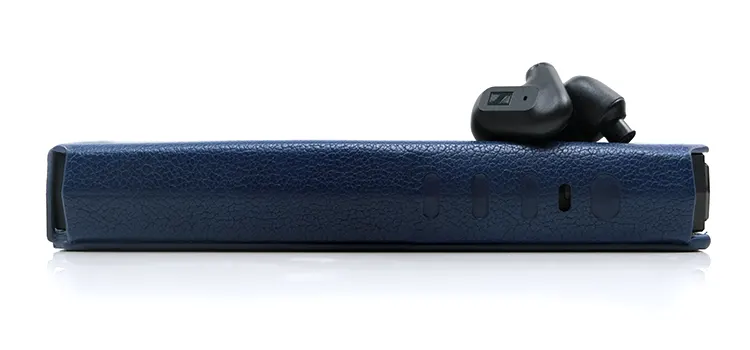Sound Impressions
Summary
I have seen the Sennheiser IE 200 described as a more consumer-friendly tuning for the masses. I am not sure that is true. I actually think it brings a lot of the audiophile sensibilities from its bigger brothers such as the IE 600, down to a more widely affordable level.
If anything, it bucks the classic norm at this price point with less of a V-shaped emphasis and something more Harman Target Curve-sensitive.
Not that it faithfully follows it, there are some deviations but the net effect is a fairly balanced and enjoyable sound signature from the IE 200, albeit with less technical capability when compared to the higher-end models.
If there is consumerism in this tuning it’s more likely to be found in a flexible sound signature that should work quite well with a broad range of genres.
It’s not an offensive sound signature, this is quite mature with a nice balance offering reasonable sub-bass presence with the right tip position combined with a punchy mid-bass performance.
Mids and vocals have a strong presence that can lift a little bit from a narrow treble peak in terms of sparkle and timbral mix but never really veered into ever-present sharpness.
Responsive
Sources do play a role in the performance of the IE 200. You will find that it is hungrier for volume and power than the ratings might suggest so going SE with the stock cable might see you push it up to medium gain with some sources.
Your choice of source and tip will also affect the overall tuning of the IE 200. Some, like the Cayin RU 6 and the FiiO KA5 will produce a stronger analog overtone with vocal emphasis and others like the Questyle M15 will enhance the dynamics, and the soundstage, as well as produce a more powerful sound.
Those tip choices and positions are essential also. Overall, it’s the foam tips and the standard position that gets my vote for the most amenable tuning from the IE 200. The tone is fuller, the bass is weightier and the treble smoother.
With the silicone tips, especially in the open position, the bass is very neutral, creating a shallower soundstage and allowing for the forward midrange and treble overtone to dominate creating a much cleaner and brighter sound.
Frequency Response
So back to that curve, I mentioned previously. You actually get two response curves for your money with the IE 200.
The standard tip position will offer a bit more bass and tames the highs little in return and the open position, where the tip sits a bit higher allows the vent to breathe more easily, with less bass presence and slightly more upper mids and highs presence.
The foam tips offer the strongest bass FR with the standard position and out of the 4 combinations, this was the most pleasing and natural-sounding tip type and position.
Because the bass is somewhat flatter in the open tip position and less influential that slight increase in the 5-6k region will seem more pronounced, especially in the cleaner instrumental and vocal timbre and the pronounced bias to vocal presence in general.
The stock silicone tips were never quite sealed as well for me unless I used the largest size. They also accentuate that stock open sound a lot more than the foam tips which bring in a bit more bass and counter the highs a bit better.
In both positions, the flattest point in the IE 200 curve is the 200-500Hz region which does a nice job of draining any potential bloat from bleeding into the midrange. The 1-3k levels of gain are stronger but not over the top in the standard position with the foam tips. If you enjoy a good vocal with a mid-centric source the IE 200 does very well in that regard.
Timbre
Again, you can split the coloration into two camps with the IE 200 depending on the tip position and tip type.
The first, the standard position, will give you a better underlying fundamental to lower register notes, a smoother midrange tone, and a more relaxed but still detectable 6-7k treble overtone.
Doubly so with the foam tips which is my preferred setting when using the IE 200. You get a fuller sound throughout with the most pleasing level of vocal euphony which is important to me given the forward nature of the vocal imaging in general.
The IE 200 does respond quite well to different pairings so you can tweak this profile a little more with warmer or smoother sources that might accentuate the vocal density and smoothness, for example, the Cayin RU6 and the FiiO KA5 but these tend to come at the cost of a little loss in low-end weight.
If you want to retain the best combination of weight and saturation in the midrange performance something like the LP W2 and the Cayin N3PRO, (tube timbre) work the best for me combined with the foam tips.
The silicone tips will strip out the bass density and presence, more so in the open position. Here the timbre is at its brightest sounding becoming a bit more neutral in tone with the standard position applied.
The lower treble peak will make its presence felt a bit more with a heightened level of natural sibilance and leaner splashier percussion passages.
Staging & Dynamics
The overall staging experience of the IE 200 is not as deep as something like the Flare Audio E-Prototype or the Campfire Honeydew but it will sound more balanced with a bias to intimacy and vocal presence over expansion and airiness.
Staging depth is moderate in all tip positions though in the standard position with the foam tips you will get the strongest bass level and more perceived depth and power. Switching to the silicone tips will reduce the depth and impact of the IE 200 a little.
The open position reduces it in a more dramatic fashion leaving you with a decidedly mid-forward imaging experience and a slightly tall soundstage but lacking in a lot of depth and power.
Sources will switch the bias a little, with sources such as the N3PRO and the RU6 giving you more vocal-centric performances from the IE 200 at the cost of some staging depth. The Questyle M15 and the LP W2 will comparatively up the depth and bass presence to a more satisfying level.
The dynamics were actually above what I was expecting at this price point. You can improve it further with a less resistant balanced-capable cable to take advantage of the improved power output of some sources.
Testing with the IE 600 cable and using a balanced output from the same quoted sources, the IE 200 low end did sound pleasingly tighter and snappier in its delivery.
Synergy
Efficiency
The Sennheiser IE 200 is rated at 18Ω and 119dB (1kHz, 1Vrms). On paper, this would point to this being a sensitive in-ear monitor. However, during testing, I found it to need quality power to perform and volume match with competing IEMs.
Using the Cayin N3PRO DAP I found comparable single dynamic driver IEMs to be either more sensitive or on par with the IE 200 despite having a much higher impedance rating.
For example, the HIFIMAN RE800 Silver is rated at 60Ω and 105dB SPL @1kHz but with the N3PRO the volume gap was not huge in all honesty. Both seemed to move slowly with upwards volume adjustments giving the impression they were equally hungry dynamic drivers.
Also, both the Campfire Audio Honeydew, (17.44Ω) and the Flare Audio E-Prototype, (approx 35Ω), were more sensitive to volume adjustments compared to the IE 200 using the Questyle M15 current mode dongle and both did seem slightly easier to drive overall.
That being said, the IE 200 is not inefficient per se. Decent voltage and current levels will drive it just fine and most DAPs have no issues, just your volume setting is going to be a bit higher, or in my case, I just switched to a medium gain setting where applicable.
One thing to be aware of is that given the IE 200 comes with a stock SE cable you will be working off lower output power numbers from most sources.
If you can source a balanced cable that is compatible with the IE 200 slightly sunken MMCX configuration, for example, the IE 600 4.4mm cable, then you will get a more dynamic and powerful performance as well as drop down to a lower gain setting.
Pairings
I tested 2 DAPs and four mid to high-end dongles with the IE 200 and right away I do have to say the IE 200 is pretty responsive to the differing sound signatures that each source brought to the table.
I could probably safely split the sources into those that tended to bring a bit more focus to that IE 200’s 1-3k peak and fleshed out the vocals beautifully and for the others that had better dynamic range, an airier soundstage, and a stronger bass response.
Vocal Preference
In the former group, I would place the Cayin N3PRO DAP using its tube timbre in Ultralinear mode, as well as the Cayin RU6 and the FiiO KA5 dongles.
The N3PRO tube Ultralinear mode really brings something very different to the IE 200 performance that none of the other sources could offer and that was a very wide and tall mids and treble range with a very sweet tone and excellent vocal focus.
The KA5 and R-2R RU6 came close with great vocal timbre but not quite as expansive as the N3PRO. The RU6 softens the IE 200 bass response but, in return, offers a very smooth-sounding R-2R vocal that I find endearing.
The surprise to me was the KA5’s dense almost analog-like midrange delivery. I have not reviewed the KA5 but after checking and seeing it uses a dual CS43198 DAC design I should not be surprised. These DACs are known for their analog smooth tone, to begin with.
My only critique of the KA5 is that the vocals might be a little too forward for some and not as resolving for background spatial cues compared to some of the other sources when paired with the IE 200.
Dynamics Preference
In the latter group, I would place the Questyle M15 with its Sabre DAC and current mode amplification and the Luxury & Precision W2 dongle.
The IE 200 sounded more powerful with these two dongles, with a stronger bass response and better definition also. Both gave an airier taller and deeper soundstage but also sounded more neutral, especially in the case of the M15.
The IE 200/M15 pairing had a neutral cleaner vocal that sits back a bit more compared to the KA5 and RU6 with a little more treble overtone in the timbre. The W2 seems a better blend with the IE 200 with a beefy bass performance but also with less treble energy giving it a fulsome tone without any sibilance.
The HiBy R5 Gen 2 DAP in Class A mode sat somewhere in between all of them. I got a good bass response from the IE 200 and not too much in the way of treble energy or shouty vocals. Just it felt less distinct compared to what the dongles brought to the IE 200.
One final note, all the dongles preferred to be in high gain, the N3PRO in medium gain, and the HiBy Gen 2 in low gain using their respective single-ended 3.5mm outputs.





